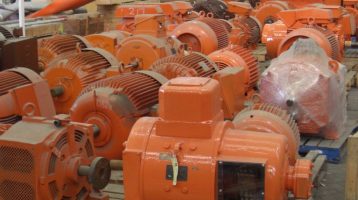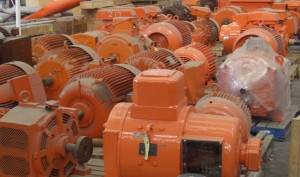[grwebform url=”https://app.getresponse.com/view_webform_v2.js?u=uY&webforms_id=14719202″ css=”on” center=”off” center_margin=”200″/] One question that I get asked a lot is: who should run the spare parts storeroom? The question is often asked out of frustration due to a perceived lack of service or frustration borne from overstocking. I suspect that the answer most people seek is that they should run the storeroom
Phillip Slater Wins National Logistics Leadership Award
Leadership in Logistics Education Award In 2012 the Logistics Association of Australia announced Phillip Slater as that year’s winner of the Kim Rothwell Leadership in Logistics Education Award. Phillip Slater is a spare parts management specialist, consultant, author, and Founder of SparePartsKnowHow.com. Kim Rothwell, is a life member of the
How Squirrel Stores Wreck Your Data
Recently I wrote about the two major storeroom activities that prevent your issues data from accurately representing actual usage. The first of these was the returns-to-store process and you will recall that, despite the impact on your data, if managed well this process can actually help you improve your reliability.
How Returns to Store Improves Reliability
[grwebform url=”https://app.getresponse.com/view_webform_v2.js?u=uY&webforms_id=14719202″ css=”on” center=”off” center_margin=”200″/] Recently I was an attendee at a webinar on the interaction between maintenance reliability and the storeroom. This was a free webinar that while free of cost was also free of content! Unfortunately in this case what content was there was also downright misleading because one of their key points was
Repairable Spare Parts Decision Making
Recently I was helping a company develop a suite of spare parts management policies. The process for this involves reviewing the company’s existing policies and then working with their nominated team to improve these or develop new polices, using ‘tried and tested’ generic policies as the starting point. The Repairable
How To Manage Stock Out Risk
[grwebform url=”https://app.getresponse.com/view_webform_v2.js?u=uY&webforms_id=14719202″ css=”on” center=”off” center_margin=”200″/] When I review inventory holding levels with people and I ask ‘why is the maximum setting so high?’, almost invariably the reply is, ‘because that item is critical to our operation’. However, this response, while well meaning, highlights one of he major problems (in my opinion) of spare parts inventory
Why You SHOULD Run Your Warehouse Like Wal-Mart
[grwebform url=”https://app.getresponse.com/view_webform_v2.js?u=uY&webforms_id=14719202″ css=”on” center=”off” center_margin=”200″/] A couple of weeks ago I was running a three-day inventory management and review training course in Singapore when one of the attendees made a familiar statement. He said ‘if we left this all up to maintenance they would want to stock everything like they are at Wal-Mart’. As I
How to Manage Rotable and Repairable Spare Parts
The management of rotable items and repairable spare parts is different to the management of other inventory items and proper control requires greater cooperation between maintenance and stores/inventory management. For access to this article, and all of our content, join using the button below. If you are already registered
How Storeroom Security Puts Reliability at Risk
[grwebform url=”https://app.getresponse.com/view_webform_v2.js?u=uY&webforms_id=14719202″ css=”on” center=”off” center_margin=”200″/] Many companies are fully aware of the importance of maintaining security around their spare parts inventories. They secure their spares in lock-up areas, ensure staff are on hand to manage the high levels of spares requests during the day shift period of highest maintenance activity, and provide a rock solid
Procurement Savings: 33% by Removing One Artificial Constraint
Subject Area: Procurement Savings One of the main short comings that I see in the approach to indirect materials and spare parts management procurement is that many people don’t think past the key decision as to whether to stock or not to stock an item. After they reach the decision




